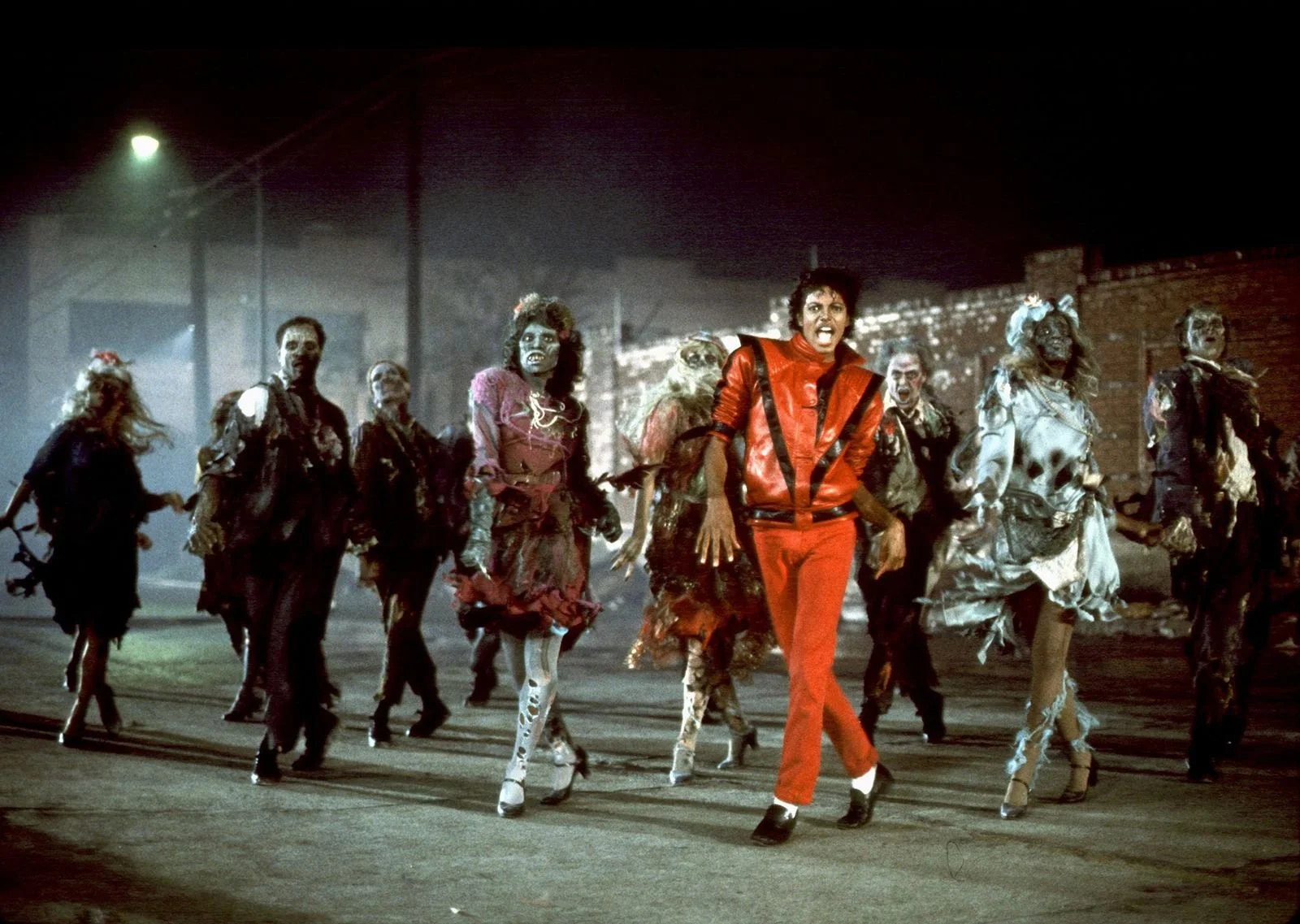Why Music Videos Don’t Matter Like They Used To, and Why That’s Okay
Written by Carlos José Jijón
‟Thriller” (1984) Michael Jackson
Do you remember the last time you watched a music video in full? Or the last time you watched a music video multiple times over the course of several weeks or months? For many fans of Western pop music, it might have been a while ago. With changes in technology and listening habits, it seems like videos, once so crucial for promoting music, might have lost their prominence.
The fear of the music video format becoming irrelevant are not in any way new. Back in 2015, the American musician and producer Rostam Batmanglij (perhaps best-known for his work with Clairo and for being a former member of Vampire Weekend) expressed great sadness over the diminishing importance of music videos in the larger cultural landscape. “I remember MTV’s countdown to the premiere of Michael Jackson’s “Scream”, [then] hyped as the most expensive video ever made. It didn’t just mean something. It meant everything. Music video is still to me the highest art form”, he wrote in the website then known as Twitter.
Back then, Batmanglij was reacting to music videos losing resources and filmmakers expressing disinterest in their creation, preferring to work on features and shorts. Since his original post, things have arguably become much, much worse for the art form. Music video viewership has plummeted in the past few years and even international superstars like Beyoncé have moved away from the format altogether.
Of course, elaborate music videos are still very important in genres like K-pop and many strands of Latin music. This is often not the case for artists writing pop songs or working in alternative spaces, though. With the popularization of highly addictive vertical video platforms like Tik Tok and IG reels, as well as the oversaturation of the music market, users going out of their ways to watch videos on Youtube seems increasingly unlikely.
And while world-renowned singers like Lady Gaga and Sabrina Carpenter can still (somewhat consistently) get dozens of millions of hits on Youtube, smaller artists are facing much harsher times. At the height of the platform, small artists could rely on the music video as a tool to create fun and relatively cheap content that could help them promote themselves. In the 2010s, groups like FIDLAR and singers like Tessa Violet were able to amass followings with clever videos that went viral.
Today, many independent artists still make audiovisual long-form content, but they usually fail to get even a few hundreds of thousands of views, no matter how inventive it is. In 2023, the British singer Emma Blackery, who has been releasing music independently since 2012, made an eleven-minute vlog explaining why she decided to stop making music videos even when she’s fond of the format. She mainly cited financial reasons: “the bare minimum that you can get away with for a music video that looks good — that has a professional crew filming for you, producers, lighting, editing, etc. — you’re looking at anywhere from 2.5 to 3 thousand pounds… minimum”.
So, what can independent artists do about it all? The most obvious answer is focusing on social media content. Many singers and producers have successfully used platforms like Tik Tok to gain attention or connect themselves with people that can help them move their careers forward. And it is still video content. Imaginative musicians can definitely come up with exciting ways to play with the format and make something substantive.
However, there are many problems with this idea. Following viral trends might be a good way to gain popularity, but it will probably not help artists trying to differentiate themselves and sell a unique brand. Furthermore, the you-better-grab-my-attention-in-two-seconds quality of vertical video apps is completely antithetical to the idea of a well-thought-out music video filled with details and subtle messaging. And that’s not even mentioning that Tik Tok is designed to keep users in the app and potentially away from distractions like watching your favorite artist’s new video. It’s really not a stretch to say that, while these platforms can be helpful, they’re also a form of competition.
But even if ambitious music videos are not the promotional tools they once were, there are many great reasons for artists to make them nonetheless. Putting together an awesome clip is a powerful way for musicians to showcase their personalities and to add layers of depth and meaning to their music. Doing it with less frequency and being more conscious of resources should not be a problem to them. According to the audiovisual producer Diego Betancourt, “music videos are a way to preserve a project’s artistic intent in time. It’s a means to express a message. It might not be useful for ‘selling’ something, but it remains a strong communicational device”.
It should be pointed out that even if music videos are not as popular as they once were, there is no reason to think this will continue to be the case in the future. As media continues to evolve, crazy and flashy music videos might make a comeback. With that in mind, though, maybe it’s okay for the art form to be less prominent. It means that artists can focus their time and resources in other, more effective ways of promoting their work and expressing themselves. Creatives can always experiment with the way they connect with audiences online and they can also find new and fun ways to create live, in-person experiences where social media competition is not a concern. For many smaller artists, the best way to find new fans and share their vision is playing gigs. That never gets old.

